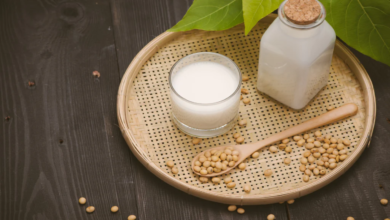Sativa vs Indica: Understanding the Cannabis Spectrum

The cannabis industry often classifies marijuana strains into three categories: sativa, indica, and hybrid. This classification has guided users towards selecting strains that match their desired effects. But how accurate are these categories today? This article delves into the intricacies of “sativa vs indica” and explores what these terms mean in the contemporary cannabis conversation.
What is Sativa vs Indica?
Historical Context and Botanical Differences
The terms “sativa” and “indica” have roots that go back centuries, originally intended to describe distinct species of the cannabis plant. Carl Linnaeus first identified Cannabis sativa in the 18th century, describing hemp plants cultivated primarily in Europe and western Eurasia for their fibres and seeds. Shortly after that, Jean-Baptiste Lamarck identified Cannabis indica as a species from India, noted for its psychoactive properties.
Morphologically, Cannabis sativa plants are typically taller with narrower leaves, often associated with a longer growth cycle. In contrast, Cannabis indica plants are generally shorter, bushier, and have broader leaves, with a quicker flowering cycle. These physical characteristics were initially used to distinguish the two types of Cannabis.
The Shift to Chemical Profiles
Over time, the classification based on physical traits has proven simplistic and often misleading. Modern research suggests that the effects of Cannabis are more accurately predicted by the plant’s chemical composition—specifically its cannabinoids and terpenes—rather than its species designation as sativa or indica.
Cannabinoids: THC and CBD
Cannabinoids are chemical compounds found in Cannabis, with THC (tetrahydrocannabinol) and CBD (cannabidiol) being the most prevalent. THC is known for its psychoactive effects, providing euphoria and relaxation, while CBD is non-intoxicating and is reputed to help with anxiety, pain, and inflammation. The ratio of these cannabinoids often directly impacts the user’s experience than whether the strain is labelled as sativa or indica.
Terpenes and the Entourage Effect
Terpenes are aromatic compounds produced by many plants, including Cannabis. They contribute to the plant’s scent and flavour and are believed to influence the effects of Cannabis by interacting with cannabinoids. This interaction, known as the “entourage effect,” suggests that the overall effects of Cannabis are due to a complex interplay between various cannabinoids and terpenes, creating a more nuanced experience than what might be expected from THC or CBD content alone.
Rethinking Sativa vs Indica
Misconceptions and Modern Understanding
While historically, sativas have been associated with more energizing effects and indices with more sedative effects, these distinctions are based more on anecdotal evidence than scientific ones. The reality is that most modern strains are hybrids of these two categories, and the pure types are rarely found. Moreover, the effects of any given strain depend heavily on the individual’s body chemistry, the specific cannabinoid profile, and the terpene makeup.
Practical Advice for Cannabis Users
Given the complexity and variability of cannabis strains, users are better served by focusing on the specific properties of each strain rather than its broad category as sativa or indica. When selecting a strain, consider the following:
- Cannabinoid Ratios: Decide whether you prefer a THC-dominant, CBD-dominant, or balanced strain based on the desired therapeutic or recreational effects.
- Terpene Profile: Identify which terpenes are present and in what concentration, as this can guide you towards the impact you seek, such as relaxation, euphoria, or pain relief.
- Personal Experience: Understand how different strains affect you; individual reactions can vary widely.
Conclusion
The distinction between sativa and indica strains is becoming increasingly viewed as outdated and overly simplistic. As the cannabis industry evolves, a more detailed understanding of cannabinoid and terpene profiles is essential for consumers looking to tailor their cannabis experience. By moving beyond the sativa vs indica dichotomy, users can make more informed choices about the products they consume and their expected effects.
Frequently Asked Questions About Sativa vs Indica
1. What is the main difference between sativa and indica strains?
Historically, sativa strains are known for their taller stature and narrower leaves, often linked to more energizing effects. Indica strains, on the other hand, are shorter, bushier, and associated with more sedative effects. However, these distinctions are based more on physical appearance than actual effects, which are better predicted by their chemical profiles, including cannabinoids and terpenes.
2. Can you reliably predict the effects of a cannabis strain based on whether it’s sativa or indica?
Predicting the effects based solely on whether a strain is labelled sativa or indica is increasingly considered unreliable. The effects are more accurately determined by the specific blend of cannabinoids and terpenes in the strain and individual body chemistry.
3. What are cannabinoids and terpenes, and why are they important?
Cannabinoids, like THC and CBD, are compounds in Cannabis that affect the body’s endocannabinoid system, influencing mood, pain sensation, appetite, and memory. Terpenes are aromatic compounds found in many plants, including Cannabis, which influence the plant’s smell and may also affect the effects of cannabinoids through the “entourage effect.”
4. What is the “entourage effect”?
The “entourage effect” is a theory that suggests that the therapeutic impacts of Cannabis are enhanced when its various natural components, including cannabinoids and terpenes, work together more effectively than they do alone.
5. How should I choose a cannabis strain if sativa vs indica classifications aren’t reliable?
Focus on the strain’s cannabinoid and terpene profiles, which provide more precise clues about the effects you might experience. Consider the ratios of THC to CBD and the presence of specific terpenes that align with the impact you desire, such as relaxation, alertness, or pain relief.
6. Are there any pure sativa or indica strains available?
Pure sativa or Indica strains are rare, as most modern cannabis strains are hybrids of both. Pure strains can occasionally be found but are less common in the commercial market, where hybrid strains dominate.
7. What should beginners know when choosing between sativa and indica?
Beginners should start with strains that have a balanced THC-to-CBD ratio or strains with higher CBD levels, as these are less likely to induce overwhelming effects. Also, understanding personal reactions to different strains over time will guide better choices than relying solely on sativa or indie labels.
Also Read: Exploring the Nutritional Benefits of FOIDSOY: A Promising Alternative to Traditional Soy Products




